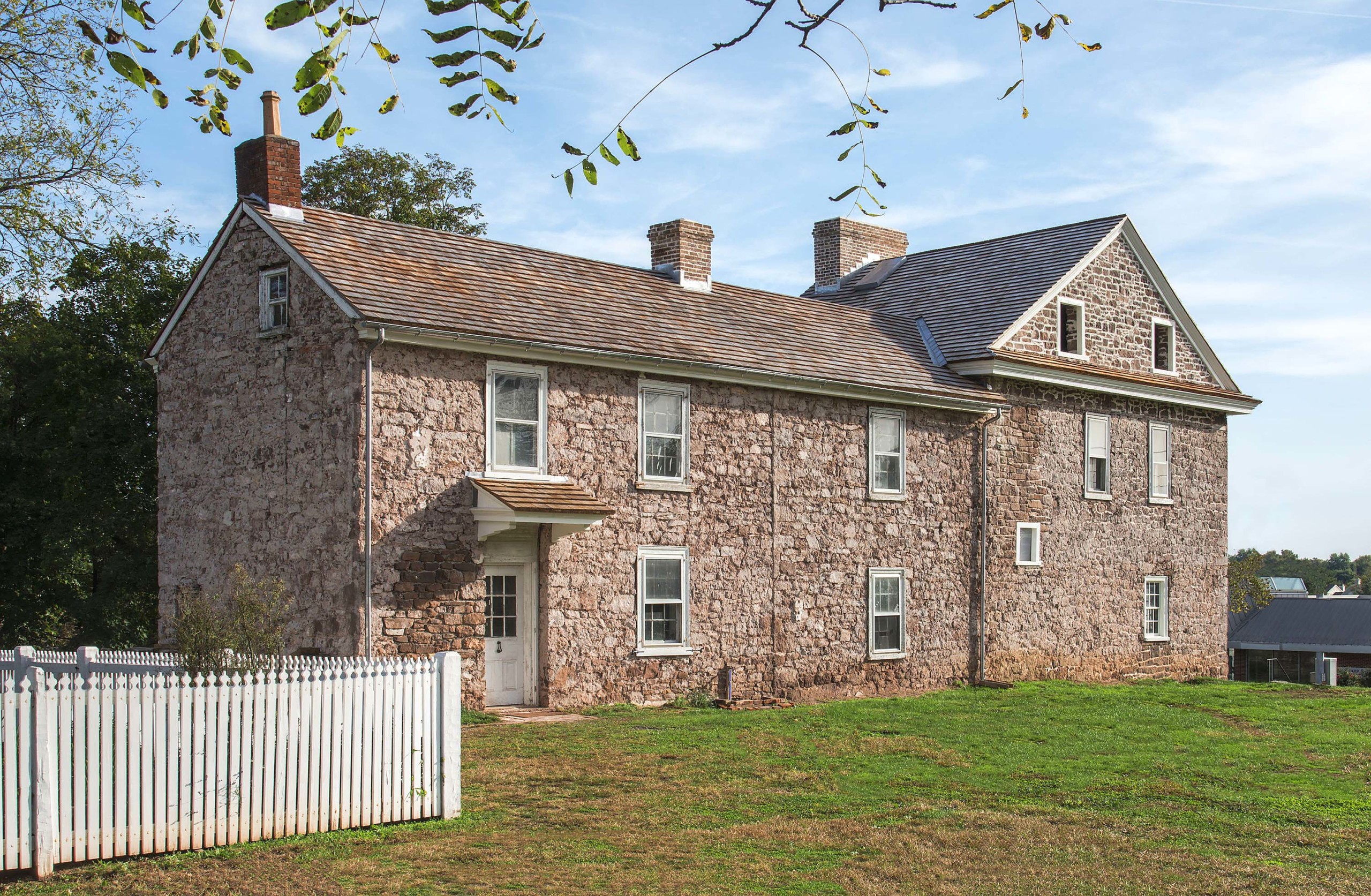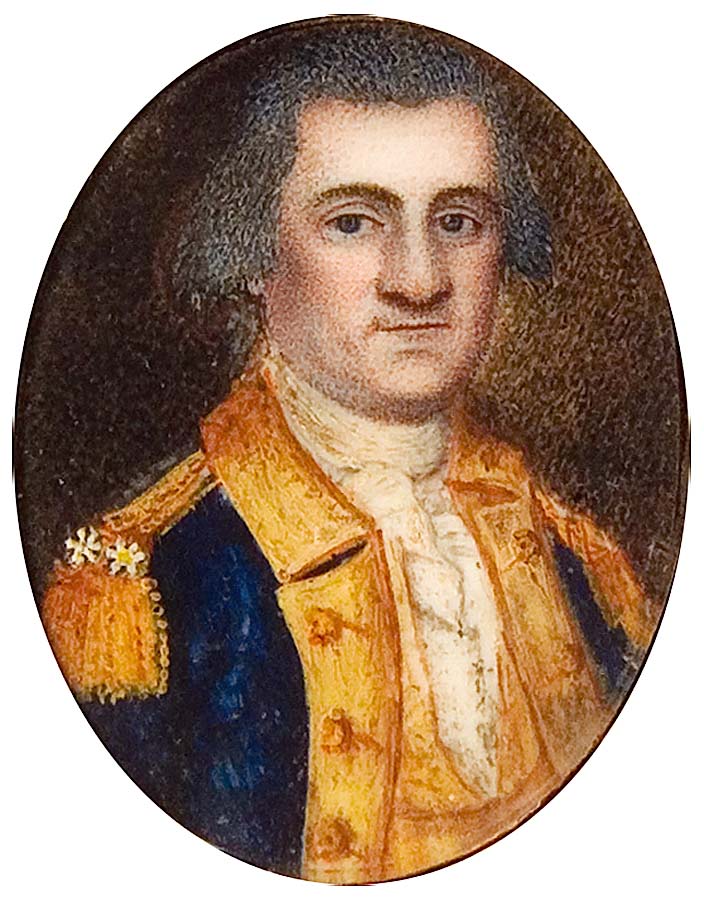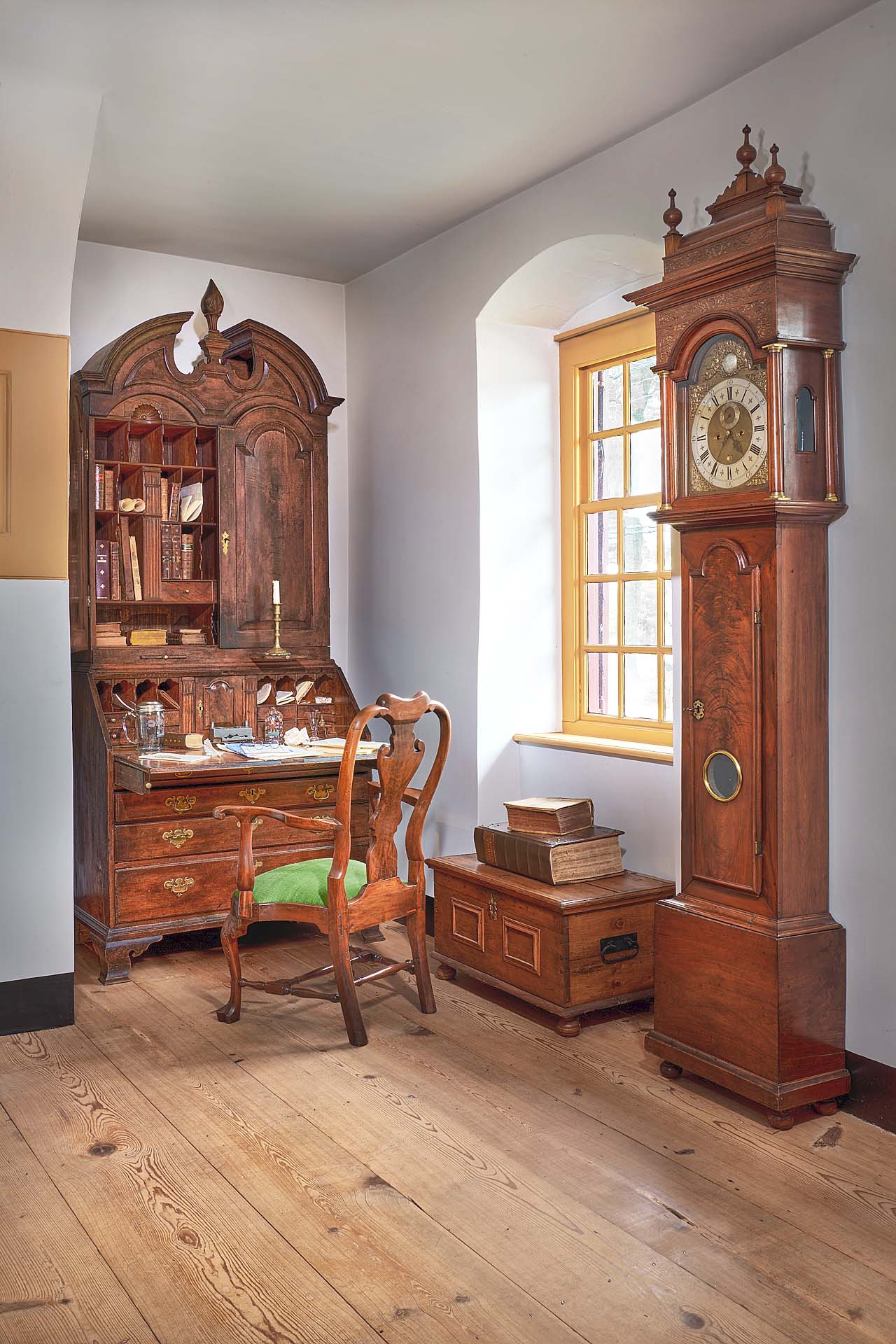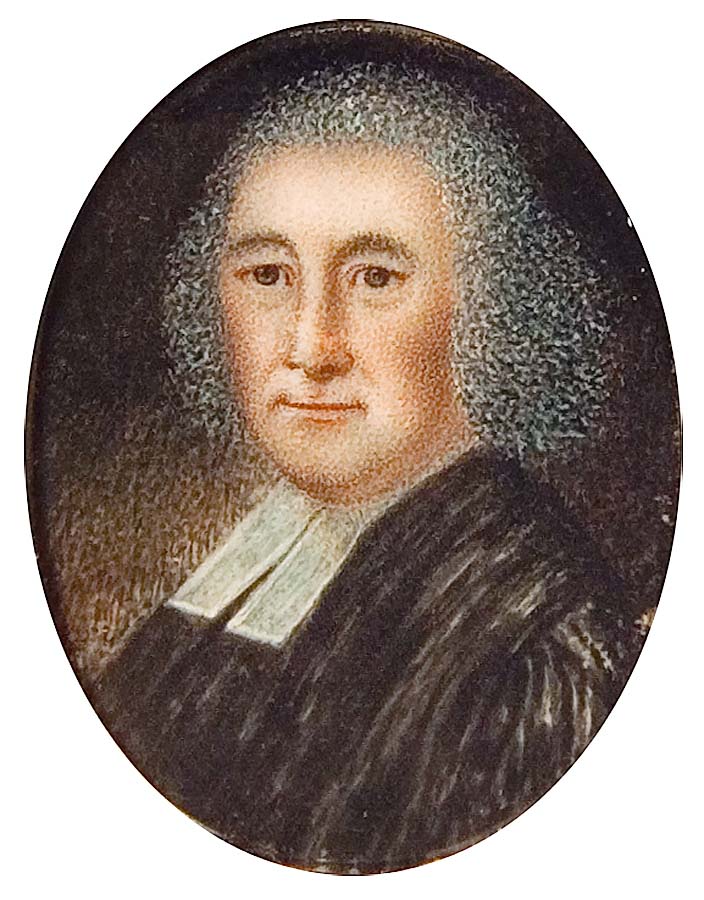
Michael E. Myers photo.
Organizations — from heritage and genealogical societies to civic and government bodies to museums — are gearing up around the country for the 250th anniversary of our independence. One of them — Historic Trappe — has also jumped on the bandwagon and we reached out to executive director, Lisa Minardi, for a sneak peek at what she and her team are planning to mark this significant moment in the history of the institution, and the United States.
What do we know about what life was like at Historic Trappe in 1776?
Located in the Perkiomen Valley about 25 miles northwest of Philadelphia, and seven miles from Valley Forge, Trappe was founded in 1717 by German immigrant Jacob Schrack, Sr. It was originally nicknamed “the Trap” after a local tavern. By 1776, Trappe had grown into a small village inhabited primarily by German-speaking immigrants and their descendants. There were a dozen houses, several taverns and two churches — Augustus Lutheran and St Luke’s Reformed. Freight and passenger wagons constantly passed through Trappe due to its location on the main road about halfway between Philadelphia and Reading. Most of the area was agricultural, but local tradespeople included a redware potter, blacksmith and cabinetmaker plus various millers along the nearby Perkiomen Creek.
Five buildings remain from the 1700s — four of them owned by Historic Trappe. Augustus Lutheran Church, built in 1743, retains its original Germanic interior and is still owned and used by the congregation. It served as a field hospital for the Continental Army after the Battle of Brandywine in September 1777. Nearby is the Muhlenberg Parsonage, built in 1745 and recently donated to Historic Trappe. Built for Lutheran pastor Henry Muhlenberg (1711-1787) and his wife, Anna Maria Weiser, it is where most of their children were born and raised. The building has a wonderful early Germanic interior and will be our next big restoration project. Along Main Street, there is the Dewees Tavern, home to our Center for Pennsylvania German Studies; the oldest section was built about 1740. Then there is the Muhlenberg House, purchased by Henry Muhlenberg in 1776 as his retirement home after 16 years of living in Philadelphia. This house is restored and furnished to reflect the Revolutionary War era, including when Henry’s eldest son, General Peter Muhlenberg (1746-1807), moved in with his family after the war. Finally, there is the Speaker’s House, home of Henry’s middle son Frederick Muhlenberg (1750-1801), first Speaker of the US House of Representatives. This house, which is undergoing a massive restoration, played a major role in the founding of Montgomery County in 1784. Frederick Muhlenberg was the county’s first head judge, recorder of deeds and register of wills — and, since there was no official courthouse until 1787, his house served as a de facto seat of government.

Speaker’s House, 151 West Main Street, Trappe, Penn. Gavin Ashworth photo.
Did Historic Trappe — or any of its residents — play a significant role in the American Revolution? If not, do we know why? What else they were doing at the time?
Trappe played a major role in the American Revolution. Henry Muhlenberg kept a daily journal of his family’s experience during the war. He was still living in Philadelphia on July 4, 1776, and heard the Declaration read aloud publicly on July 8, then moved to Trappe on July 11. Although there was never a battle in Trappe, the Continental Army was in the area throughout the fall of 1777. Muhlenberg heard the cannons from the Battle of Brandywine and afterwards, dozens of wounded soldiers were treated at Augustus Lutheran Church. He described the evacuation of Philadelphia, including thousands of women and children who fled the city ahead of its capture by the British. In late 1777, the Muhlenbergs’ cellar was taken over by the Continental Army for storage, with cannons parked in the yard and soldiers everywhere throughout the town. The Trappe area lived in constant fear of attack until the theater of war finally moved out of Pennsylvania by the summer of 1778.
Peter Muhlenberg was extensively involved in the Revolution. While pastor of a Lutheran congregation in Woodstock, Va., Peter also served on various Committees of Correspondence. On January 12, 1776, Peter accepted a commission as a colonel of the Eighth Virginia Regiment and began raising troops among the Germans in the Shenandoah Valley. According to legend, he delivered a rousing farewell sermon and after exhorting his congregation that “there is a time for all things — a time to preach and a time to fight, and now is the time to fight!” Peter threw off his clerical robe to reveal his military uniform underneath and promptly began mustering volunteers. He served valiantly throughout the war, including at Brandywine, Germantown, Saratoga and Yorktown.

Portrait miniature of General Peter Muhlenberg, circa 1780. Collection of a descendant. Gavin Ashworth photo.
Frederick Muhlenberg also gave up the pulpit but chose a different path, first as a delegate to the Continental Congress. He then served two terms as Speaker of the Pennsylvania Assembly, helped lead Montgomery County after its founding in 1784, and in 1787 was chair of Pennsylvania’s Constitutional Convention. Both Frederick and Peter were elected to the US House of Representatives in 1788, with Frederick becoming the first Speaker of the House in 1789. As Speaker, Frederick was also the first signer of the Bill of Rights. He served again as Speaker of the Third Congress but fell out of favor after casting the tiebreaking vote to fund the Jay Treaty.
The 250th anniversary of the US — officially called the Semiquincentennial — is July 4, 2026. Is Historic Trappe doing anything between now and then — or afterwards — to commemorate this historic anniversary?
We have three major projects underway to celebrate the US Semiquincentennial. First, we are revamping the Muhlenberg House to reflect up to 32 people living there during the war. The house was essentially a refugee camp for family members who fled Philadelphia and New York — especially women and children. We are adding several more fully dressed beds and cradles to the house and also trunks and chests to represent goods sent there for safekeeping.

Office in the Muhlenberg House, 201 West Main Street, Trappe, Penn. Michael E. Myers photo.
Second, our Center for Pennsylvania German Studies will host a major loan exhibition, “Window to Revolution: Pennsylvania Germans and the War for Independence.” All five galleries will be devoted to this, beginning with witness objects such as weathervanes and communion vessels from churches and meetinghouses that were occupied as field hospitals. We will examine the war in the Shenandoah Valley and Peter Muhlenberg’s transition from pastor to Continental Army officer. Our fraktur gallery will feature works by Hessian soldiers who stayed in Pennsylvania after the war and became schoolmasters and fraktur artists. We will also explore Mahantongo Valley furniture and its display during the 1926 Sesquicentennial exhibition in Philadelphia. The largest gallery will feature artifacts such as flintlock pistols, Continental currency, pewter made by William Will who was a soldier in the war, portraits, Henry Muhlenberg’s journals, a German translation of the Declaration of Independence and much more. Working with me on the exhibition are Christopher Malone, our curator, and Emily Sneff, our consulting curator and historian. Funds permitting, we will produce a catalog to accompany the exhibition.
Our third project is to complete the restoration of the Speaker’s House and open it to the public in April 2026. Saved from demolition by the local community more than 20 years ago, the house has been undergoing restoration ever since. I have been involved from the beginning, when myself and several other volunteers (including my younger brother and a crew of fraternity brothers from nearby Ursinus College, my alma mater) cut down the ivy that was covering the house and tore out bathrooms, kitchen cabinets and drywall ceilings to expose the original construction evidence. We then undertook an extensive campaign of archival, architectural and archaeological research into the house’s history and change over time in order to develop a restoration plan. The kitchen wing restoration is now finished, and we just launched our historic foodways programming for the summer. Work is currently underway on the second floor; lots remains to be done yet including rebuilding the plaster cove cornice and restoring the main staircase, interior plaster and painted woodwork. Once the restoration is done, we have to furnish the house. We are actively looking for donations of furniture and accessories suitable for a fashionable Philadelphia area home in the 1780s-90s. Having been involved with this effort for so long, I am thrilled to see this project coming to fruition. It is an amazing experience to bring the home of such an important Founder back to life, and I can’t wait to share it with everyone next year!

Portrait miniature of Henry Muhlenberg, circa 1780. Collection of a descendant. Gavin Ashworth photo.
What can visitors to Historic Trappe see during this presentation that they won’t see at other times?
Historic Trappe is planning a two-year celebration of America’s 250th anniversary. In spring 2026, we will hold the grand opening of the Speaker’s House — fully opening the entire house to the public for the first time ever. To my knowledge, this is the only Revolutionary War-era historic house museum that will be opening for the first time next year. It is also one of the only Founders’ houses still standing in all of Pennsylvania, making this a truly once-in-a-lifetime opportunity. The re-furnishing of the Muhlenberg House to reflect its crowded wartime condition will also drive home the real sense of disruption and fear that pervaded the Philadelphia countryside in the aftermath of the Declaration. We will also debut the “Window to Revolution” exhibit, which will remain on view through February of 2028. The pinnacle of this exhibit will be Henry Muhlenberg’s journals, which will return to Trappe for the first time since they were written — on loan from the Lutheran Archives Center at Philadelphia. Other important loans include spectacular fraktur by the Sussel-Washington Artist and a never-before-exhibited Revolutionary War flag.
Historic Trappe is a rapidly growing organization with an ambitious agenda for 2026 and beyond. We hope many readers of Antiques And the Arts Weekly will take the time to visit us over the next few years. I can assure you that you won’t be disappointed!
Is there anything else you want to share with our readers?
America’s 250th anniversary is a momentous opportunity for our nation’s museums and historic sites to work together to re-ignite widespread interest in all things Americana, especially for younger generations. In the Philadelphia area, we are expecting over a million visitors next year due to major sporting events such as the PGA Championship, World Cup Soccer and MLB All-Stars. This is truly a once-in-a-lifetime opportunity that we cannot miss. But with the dismantling of the IMLS, NEH and NEA, this is an especially challenging environment for museums and historic sites to undertake bold new projects and get ready for 2026.
I challenge everyone reading this column to do whatever you can to support local and regional museums in their efforts to prepare for 2026. Volunteer as a tour guide, donate money, do whatever you can to help. Whether you’re a collector, antiques dealer, curator, auctioneer, appraiser, historian or philanthropist, now is your time to help local organizations rise to the occasion for this once-in-a-lifetime moment.
—Madelia Hickman Ring




